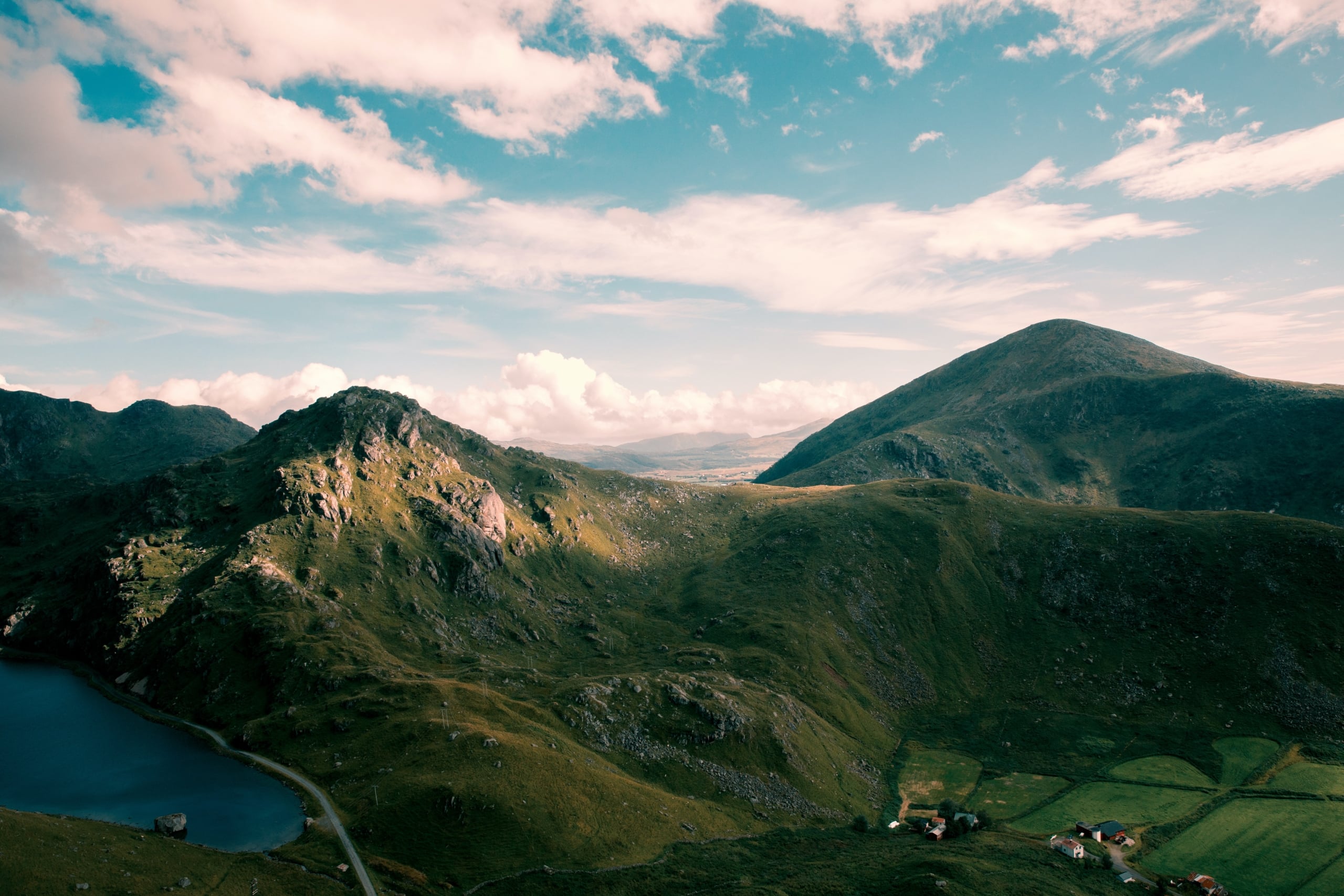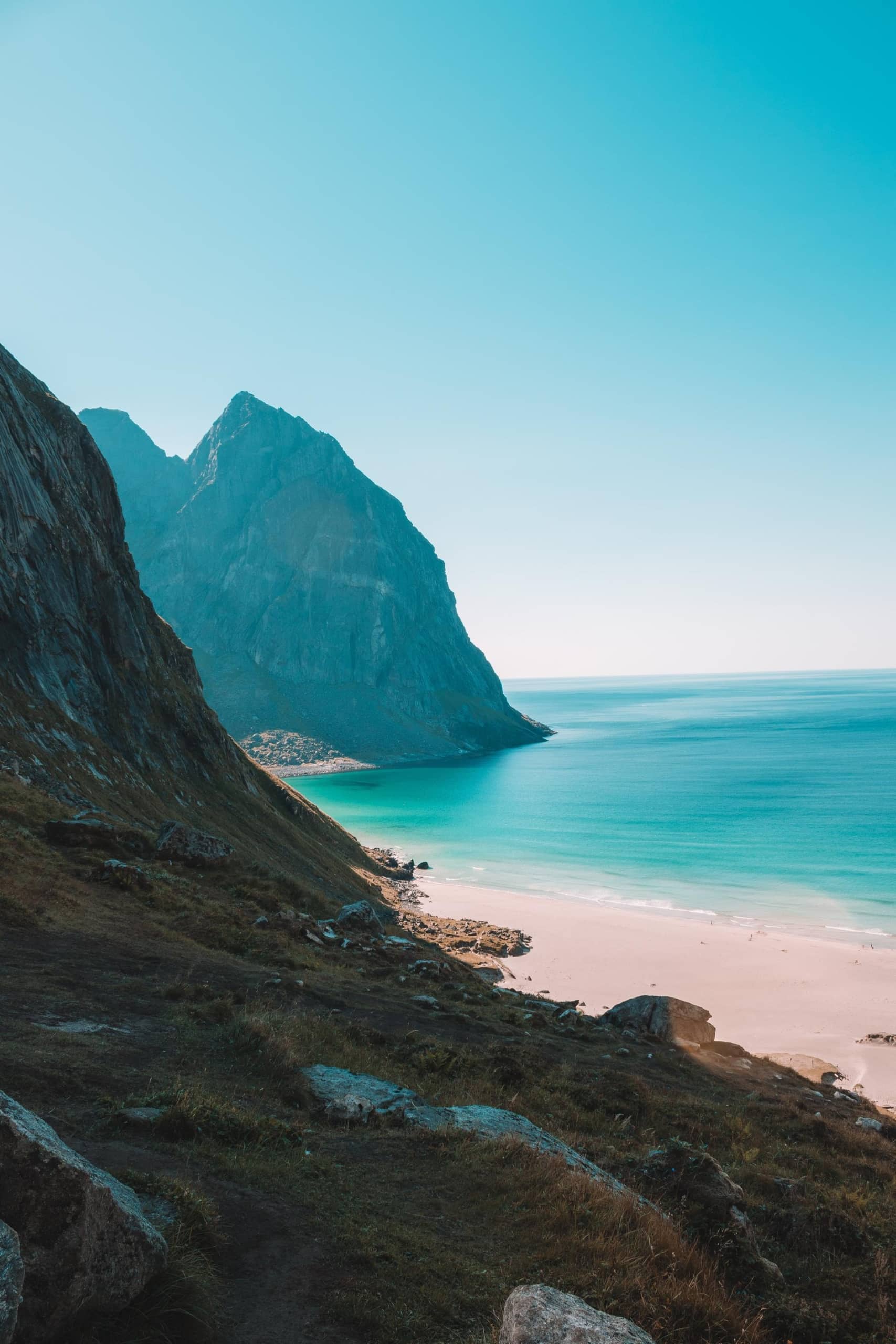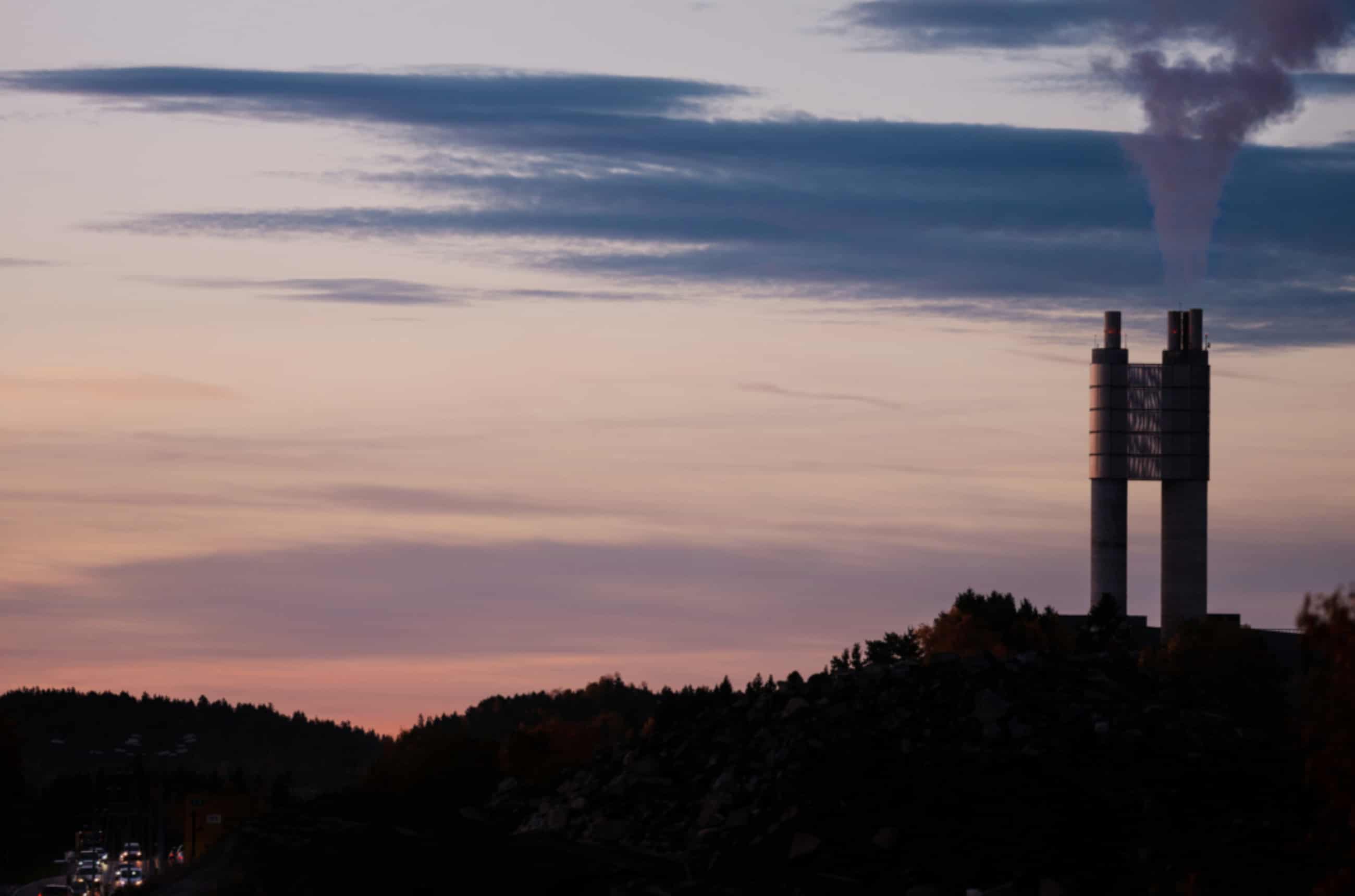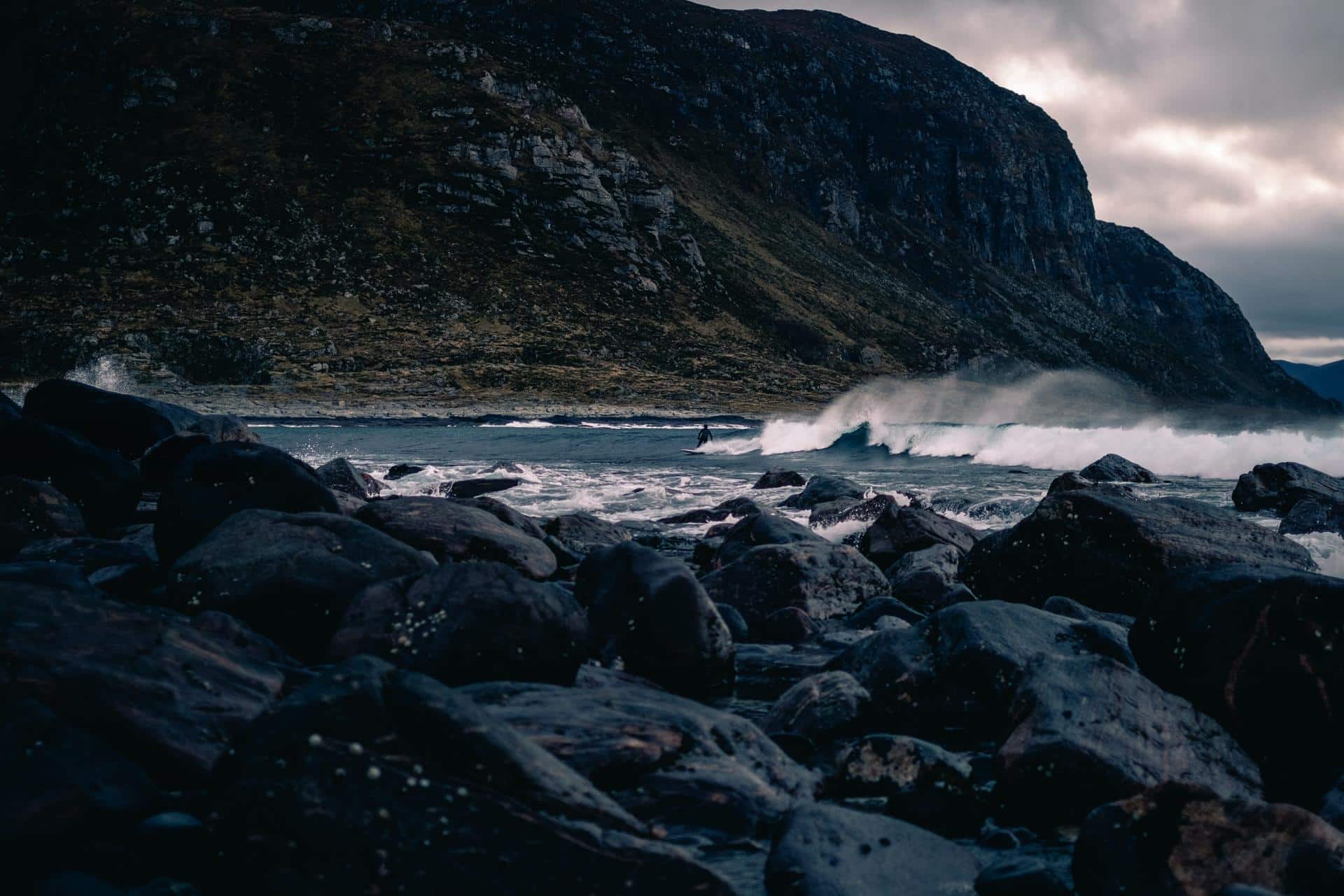
Climate and nature positive
As one of the largest producers of renewable energy and district heating in the Nordic region, Hafslund has a responsibility for making a positive contribution to both the climate and nature. Both renewable energy and biodiversity are critical for future life on our planet.
At Hafslund, we are proud of our renewable production portfolio. At the same time, there is an urgent need to create a sustainable balance between the development of new renewable energy and the impact this has on nature. The goal of nature positivity is particularly ambitious for Hafslund as a developer of renewable energy. We do not have all the answers for how to achieve this, however we will do our utmost to find solutions for how we can compensate and mitigate encroachment on nature.
Towards 2035 we will
- Minimise emissions in our own operations
- Remove CO₂ from the natural cycle
- Protect nature and the environment when developing new facilities
- Compensate for our encroachments on nature
The road towards climate positivity
The world is facing an enormous challenge in being able to achieve the transition to a zero-emission society. Hafslund’s most important climate contribution is the production of renewable energy.
Hydropower, solar and wind energy are means of clean energy production that have low emissions when compared to the average greenhouse gas emissions from European power production. In the district heating and cooling operations, local excess energy, which would otherwise have been lost, is used to produce hydronic district heating and cooling.
Our approach
Climate positive by 2030
Hafslund aims to become climate positive by 2030. In addition, the Group has the goal of reducing Scope 1 and 2 emissions by 90 per cent and Scope 3 emissions by 50 per cent within the same timeframe. The goals are based on the Group’s guiding principles. The principles also affirm that the Group will continuously work to reduce its impact on the climate and that environmental requirements shall be set for all procurements where relevant by 2025.
The Group’s carbon footprint
The Group’s carbon footprint is related to waste incineration, use of fuels and propellants, emissions of SF6 gas and emissions in the Group’s value chain. Hafslund Oslo Celsio primarily uses waste heat, electric boilers and renewable fuels such as wood pellets, bio-oil and biodiesel to produce heat. An important source of waste heat is the waste incineration plants at Klemetsrud and Haraldrud. They produce large point emissions in Oslo, however if the waste had become landfill, the greenhouse gas emissions would have been about 75 per cent higher than what is emitted from the incineration plants. Carbon capture at Klemetsrud, see our measures, will eliminate the Group’s largest emissions and Hafslund Oslo Celsio will have negative emissions when the plant is brought online, since the waste facility also burns biogenic waste. A small proportion of liquefied natural gas (LNG) is still used for producing heat. The proportion of LNG is approximately 1.5 per cent per year, and we are actively working towards a planned phase-out.
Greenhouse gas emissions in accordance with the Greenhouse Gas Protocol
Hafslund calculates and reports greenhouse gas emissions in accordance with the internationally recognised framework “Greenhouse Gas Protocol – A Corporate Accounting and Reporting Standard”.
In connection with the 2022 reporting, Hafslund carried out an assessment and expansion of Scope 3 emissions in accordance with the principles of the GHG. The reported Scope 3 emissions were therefore significantly higher for 2022 than they were in 2021. The 2022 figures also include Hafslund Celsio. There was not available data for all emissions categories, and areas of improvement were identified as part of the process. Based on these findings, during 2023 Hafslund will work to improve data quality and completeness of the reporting.
The largest emissions in Scope 3 are from categories 1 (Purchased goods and services), 2 (Capital goods) and 15 (Investments) of the GHG. The emissions are calculated based on various activity data, including accounting data from financial systems, quantity data from the largest renewable energy projects and energy data used in the district heating facility.

Hafslund’s most important climate contribution is the production of renewable energy.
Our goals and status 2022
| Goal | Result 2022 | Satisfaction | Remarks |
|---|---|---|---|
| Become climate positive by 2030 | 459,554 tonnes of CO₂e | Emissions include Scope 1, 2 and 3. Scope 2 includes market-based emissions figures. | |
| 90% reduction in Scope 1 and 2 by 2030 | 351,663 tonnes of CO₂e | 42 per cent reduction in Scope 1 and 2 compared to 2019. The base year for the goal is 2019. Market-based Scope 2 has been used. For 2022, Hafslund Oslo Celsio did not purchase guarantees of origin for its own electricity consumption, which resulted in large Scope 1 emissions. The Group's goal is for all electricity consumption to be covered by guarantees of origin in the future. | |
| 50% reduction in Scope 3 by 2030 | 107,891 tonnes of CO₂e | Scope 3 has been expanded for 2022 figures. The base year for the goal is 2019, but emissions in 2019 have not yet been recalculated in accordance with the new method of calculation. Therefore, a percentage reduction was not available for Scope 3 on the reporting date. Goals and calculation of base year shall be developed in 2023. | |
| 100% electric vehicle fleet by 2025 | 33% electric vehicles | The challenges relate to long delivery times and a shortage of electric models for four-wheel drive vans and pickups. |
Indicator table for climate positivity.
The road towards nature positivity
Hafslund recognises that loss of nature and biodiversity is an equally serious challenge to the world as climate change.
As a producer of renewable energy, Hafslund is dependent on natural resources. However, the development of renewable energy involves encroachment on nature. For us, nature positivity is about minimising the negative impact of our operations and taking steps to give back and compensate for our encroachment on nature.
Hafslund will be “nature positive” in 2035. This means that we have to better facilitate the biodiversity around our power plants, and ensure that new development and rehabilitation projects have the least possible impact on biodiversity and land use. We are working to improve conditions in areas that are already affected. The Group will also look for methods for restoring nature.
The aforementioned goal and principles are based on the Group’s governing principles.
Our approach
Taking nature into consideration in connection with new developments
Hafslund is working to reduce land use when developing new projects. It is particularly important to avoid areas with vulnerable nature, and assessments related to habitat types and biodiversity are always included as part of the project implementation. Requirements are also set for natural revegetation, with the reuse of top soil to ensure that the construction area is restored in a manner that protects species, habitats and ecosystems. Initiatives for improving the conditions for fish in the watercourses are planned in such a way that the best available technology is used.
In order to get closer to achieving the goal of nature positivity, further work will be carried out to identify measures and guidelines that work towards minimising the impact new developments have on nature.
Monitoring and assessing conditions in existing watercourses
Assessing and monitoring the condition of watercourses are important for documenting the environmental status of regulated watercourses. The issues relating to each watercourse will determine the monitoring frequency, methods and scope. The assessments provide important information and knowledge regarding the degree of impact and development in regulated watercourses.
Better conditions for fish in the watercourses - spawning grounds, fish migration and minimum water flow
Hafslund Eco Vannkraft is implementing a number of measures to improve conditions for fish in regulated watercourses. To ensure that the measures work as intended, there is close cooperation with research institutions, including the Norwegian Institute for Nature Research (NINA) and NORCE LFI, Norwegian Research Centre, which regularly evaluate the status and impact of the measures in the watercourses.
Restoration and establishment of spawning grounds are important for improving the spawning conditions for fish and other organisms that live in the watercourses. There are primarily three knowledge-based measures which have proven to have a good effect: the laying out of spawning gravel, harrowing (ripping) of the riverbed to loosen up the bottom sediments and opening of tributaries to the main river.
Good solutions for fish migration past power plant dams are particularly important for fish populations that need to be able to pass through to fulfil their life cycle. This applies, for example, when adult fish have to migrate to spawning grounds to reproduce, and the young fish have to migrate back to feeding areas in order to grow. We have analysed all of our power plant dams in the Glomma and Trysil watercourses, and drawn up an action plan to improve the conditions for fish migration. Automatic fish counting on the fish ladders provides us with an important knowledge base, and as a result relevant measures are implemented. There is also a focus on improving knowledge and implementing measures in other watercourses with power plant dams and fish migration.
In addition to statutory minimum water flow and environmentally adapted water flow, when concerning watercourses that have special conditions, for example, populations of large trout stocks like we have in Gudbrandsdalslågen or salmon and sea trout in Vassbygdelvi in the Aurland watercourse, there may be a need for voluntary release of water to ensure suitable conditions for life in the water. The amount of water that is released and the timing of the releases are evaluated based on local conditions and results from assessments of the connection between habitat availability and water flow.
Emissions into the air, soil and water
Hafslund Oslo Celsio’s waste incineration plants and heating plants use various fuels that cause local air pollution (NOx, dust etc). All of the largest facilities have strict emission requirements to prevent the emissions from causing harm to health or the environment. The necessary cleaning equipment is installed where required. A number of measurement, monitoring and reporting systems are used to control emissions. Measures are implemented immediately, and serious non-conformities are reported to the Norwegian Environment Agency if the limit values are exceeded.
There is a risk that Hafslund Eco Vannkraft could discharge oil and chemicals into soil and water. This is reported and followed up through the company’s incident reporting system and measures are implemented immediately.

Our goals and status 2022
| Goal | Results 2022 | Satisfaction | Remarks |
|---|---|---|---|
| Become nature positive by 2035 | - | New strategic initiative in 2022. The Group continued working to define and establish measurement parameters. | |
| All facilities must be operated without serious environmental non-conformities or violations of licence conditions | 3 incidents | There were three violations of licence conditions related to water flow and reservoir levels during 2022. All incidents were reported to the NVE. | |
| Restore and improve areas in regulated watercourses | 847 m2 | New spawning grounds in the Aurland watercourse. | |
| Monitor and improve fish migration solutions in regulated watercourses | 10 fish ladders with monitoring, 3 measures initiated | There are currently 10 fish ladders with monitoring, and three practical measures were taken in 2022 at the ladders in Høyegga, Storsjødammen and Sagnfossen. |
Indicator table for nature positivity.

Efficient and circular use of materials and resource utilisation
The world has limited resources, and in order to reduce greenhouse gas emissions and avoid unnecessary loss of nature, it is essential that we succeed with circular solutions and efficient resource utilisation.
Our approach
Hafslund’s energy production is renewable and essentially circular. Electric power is produced using the renewable resources of water, wind and sun, which are part of the Earth’s natural cycle. Waste heat from waste incineration, data centres and sewage is used to heat homes and commercial buildings. Metals from the bottom ash following incineration are further processed into new raw materials.
While the Group’s core business is renewable and circular, there is still potential for improvement. Hafslund Oslo Celsio uses a small proportion of non-renewable fuels, and the Group is a major purchaser of goods and materials that require natural resources and result in waste. Therefore, going forward, Hafslund shall place an emphasis on circularity in connection with procurements and will review routines for sorting and minimising waste. Hafslund Oslo Celsio is working on cutting its use of non-renewable fuels.
Our goals and status 2022
| Goal | Results 2022 | Satisfaction | Remarks |
|---|---|---|---|
| Increase sorting rate | 89% | In 2023, the Group will set quantitative targets for circularity. | |
| Increase the share of circular solutions in purchased goods and materials | - | In 2023, the Group will set quantitative targets for circularity. |
Indicator table for efficient and circular use of materials and resource utilisation.
Adapting to climate change
One of the United Nations’ six climate goals is adapting to climate change, which is already being felt through changing climate and more frequent extreme weather.
In a changing world, it is important to have a strategy that is adapted to the changes that are coming and to regularly assess risk and implement adapted measures. Climate risk analyses were carried out for the Group in both 2021 and 2022. In addition, emergency preparedness work related to extreme weather has been carried out for many years, without this being specifically referred to as physical climate risk.
The analysis from 2022 is partly based on new information about the climate status from the Intergovernmental Panel on Climate Change (IPCC). The climate risk analysis that has been carried out was based on some of the principles of the Task Force on Climate Related Financial Disclosures (TCFD), and both physical climate risk and transition risk have been reviewed for the entire assessed value chain. A summary of the work is shown in the table below. The 2022 analysis did not include Hafslund Oslo Celsio, however the company will be included in the Group’s continued work with climate risk.

Did you know that...
In 2022, the Intergovernmental Panel on Climate Change (IPCC) released the two most recent interim reports from the Sixth Assessment Report, which form the most important scientific basis for the status of climate change.
The message was disheartening and demonstrated that climate change is already causing destruction to people and nature and poses a threat to our livelihood and the state of the planet. The IPCC’s assessment is that the effects of climate change on nature are greater and more extensive than previously thought.
To succeed, the world must succeed at three things at the same time:
- Limit warming through rapid cuts in emissions and increased capture of greenhouse gases.
- Adapt society and nature to the new changes we are being impacted by.
- Ensure sustainable development in line with the United Nations Sustainable Development Goals.
Climate risk at Hafslund
| PHYSICAL CLIMATE RISK | TRANSITION RISK | |
|---|---|---|
| • Extreme weather leads to breakdowns or reduced access to facilities | • Major price fluctuations as a result of extreme weather situations and rapid restructuring lead to political market control and reduced revenues | |
| • Harm to personnel or third parties as a result of extreme weather or changing precipitation patterns | • Stricter requirements from government authorities for project implementation due to increased environmental considerations | |
| • Energy trading and project models based on statistics do not adequately predict climate change | • New requirements from government authorities for dimensioning facilities, and for operating facilities | |
| • Delivery shortages due to supply line disruptions following extreme weather events | • Increased bottlenecks as a result of increased consumption in Southern Norway | |
| • Increased bottle necks as a result of extreme weather | • New technology and new markets lead to increased competition | |
| Measures | Measures | |
| • Assess the robustness and vulnerability of facilities with a view to there being more wind and extreme conditions | • Actively engage in framework and policy work | |
| • Clear marking of facilities. Regular inspection of vulnerable areas | • Focus on impact on climate and nature in projects | |
| • Climate-adjusted statistics | • Climate surcharge in project planning | |
| • Continually improve models and analyses | • Strategy with focus on growth in renewables, green solutions, climate and nature, and being a balancing actor | |
| • Evaluate strategy for spare parts and use of similar components | ||
| • Actively engage in framework and policy work | ||
| Risk | Risk | |
| Medium | Medium |
Strong growth in renewable energy
The green transition has created an enormous need for new renewable energy, and the increasing scarcity of renewable energy is leading to rising energy prices. Without increased energy production and lower price levels, Norway will not succeed in being an attractive location for new green industries and important workplaces. Hafslund wants to be part of the solution to this and wants to develop new renewable energy within hydropower, wind and solar in Norway and the Nordic region.
Read more